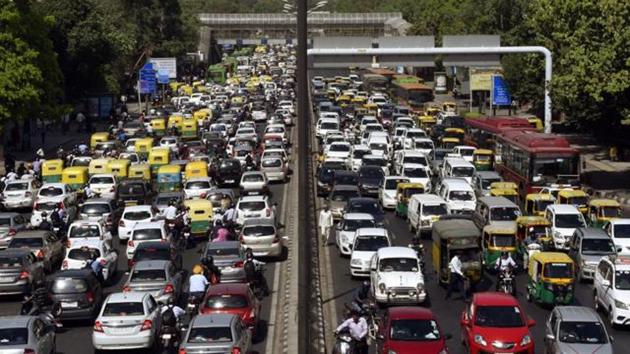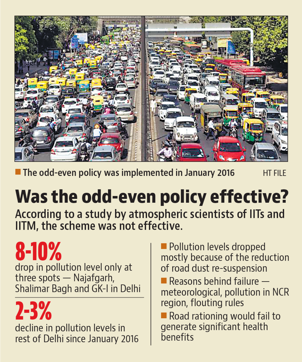Negligible fall in Delhi pollution after odd-even formula, shows new study
“Only three pockets in the city – Najafgarh, Shalimar Bagh and Greater Kailash – registered around 8 – 10% in pollution levels. In the remaining areas the decline was just around 2 – 3%,” said Sagnik Dey, associate professor at Centre for Atmospheric Sciences in IIT Delhi.
NEW DELHI

The odd-even vehicle restriction scheme introduced in Delhi for the first time in January 2016 could reduce pollution level by just around 2 – 3%, a recently published study by atmospheric scientists of IITs and IITM, has revealed.
The scientists have also cautioned that such road rationing measures would fail to generate any significant health benefits.
“Only three pockets in the city – Najafgarh, Shalimar Bagh and Greater Kailash – registered around 8 – 10% in pollution levels. In the remaining areas the decline was just around 2 – 3%,” said Sagnik Dey, associate professor at Centre for Atmospheric Sciences in IIT Delhi.
The study was done by a six member team of scientists from IIT-Delhi, IIT-Kanpur, Indian Institute of Tropical Meteorology in Pune, Environmental and Biomedical Metrology division of the Council of Scientific and Industrial Research and the Energy and Resources Institute.
“The fall in pollution level was mostly because of the reduction of road dust re-suspension as there was lesser number of cars on the road and not because of reduction in tail pipe emissions,” said Sourangsu Chowdhury of IIT Delhi.
Delhi has been ranked among the top most polluted cities in the world consistently over the last few years. As a desperate and emergency measure, the Delhi government introduced the road rationing measure as a trial for 15 days in January 2016.
The study pointed out that PM2.5 exposure not only makes citizens vulnerable to diseases but also results in at least 12000 premature deaths per year in the national capital.
A recently published report by the Delhi Pollution Control Committee estimates that the average daily concentration of PM2.5 in winter remains around 375 micrograms per metre cube against the permissible limit of 60 micrograms per metre cube.
“Traffic restriction in Delhi failed to generate any significant results given the fact that it was introduced as an emergency measure to bring down pollution levels. There could be multiple reasons,” said SN Tripathi coordinator of Centre for Environmental Science & Engineering at IIT Kanpur and the corresponding author of the study.

Scientists claimed that while on one hand stable meteorological conditions such as calm winds could be one of the factors behind the failure, other factors such as no control of PM2.5 just outside the city in the remaining parts of NCR also played a vital role.
“This was revealed from the fact that the places, where pollution levels refused to drop, were mostly located in the city’s fringes along. This calls for an inter-sectoral and inter-state approach for curbing pollution levels,” said Chowdhury.
Scientists gathered satellite data which was calibrated with the Central Pollution Control Board data and was then validated with data from SAFAR before the results could be derived.
“In order for these kind of policy interventions to be successful, we need much precise information about sources in NCT and NCR region,” said Tripathi.
Stay updated with all top Cities including, Bengaluru, Delhi, Mumbai and more across India. Stay informed on the latest happenings in World News along with Delhi Election 2025 and Delhi Election Result 2025 Live, New Delhi Election Result Live, Kalkaji Election Result Live at Hindustan Times.
Stay updated with all top Cities including, Bengaluru, Delhi, Mumbai and more across India. Stay informed on the latest happenings in World News along with Delhi Election 2025 and Delhi Election Result 2025 Live, New Delhi Election Result Live, Kalkaji Election Result Live at Hindustan Times.





